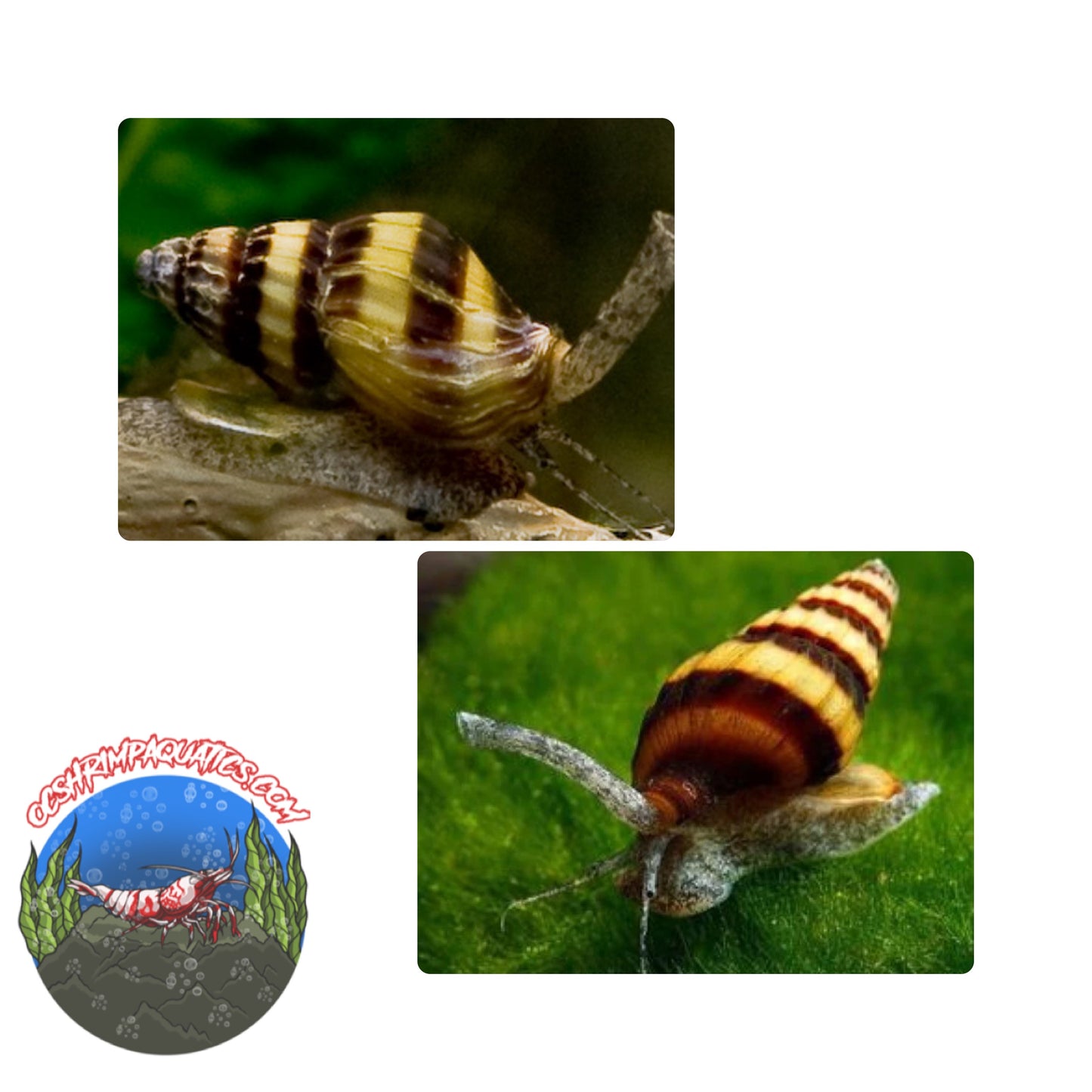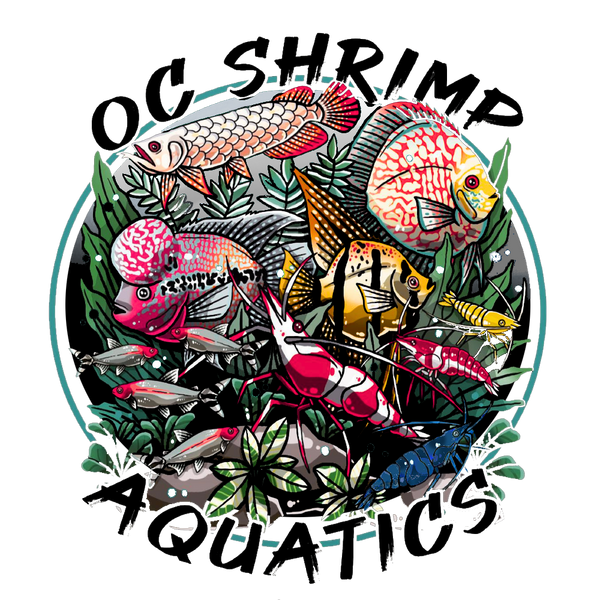1
/
of
1
OC SHRIMP AQUATIC
ASSASSIN SNAIL
ASSASSIN SNAIL
Regular price
$15.99 USD
Regular price
Sale price
$15.99 USD
Unit price
/
per
Shipping calculated at checkout.
Couldn't load pickup availability
Share
Assassin Snails (Clea helena), also known as bumblebee snails due to their distinctive striped shells, are popular in the aquarium hobby for their unique diet and pest control abilities. They are small freshwater snails known for preying on other snails, making them a useful addition to tanks plagued by pest snail infestations. Here’s a comprehensive care guide for Assassin Snails:
Tank Size and Setup
- Tank Size: Assassin Snails are relatively small, growing up to about 1 inch (2.5 cm) in length. A small group can be housed in a 10-gallon tank, but they can also be kept in larger tanks with other tank mates.
- Substrate: Use a soft, sandy substrate as Assassin Snails like to burrow into the substrate. A soft substrate helps prevent damage to their delicate shells and allows them to exhibit natural behaviors.
- Plants: Include live plants like Java fern, Anubias, and moss. These provide cover and create a more natural environment. Assassin Snails do not harm plants, so live plants are safe with them.
- Decor: Add rocks, driftwood, and caves to provide hiding spots. These snails enjoy having places to retreat and explore.
Water Parameters
- Temperature: Maintain a temperature between 70-80°F (21-27°C). They are adaptable to a range of tropical temperatures.
- pH: They prefer slightly alkaline to neutral water, with a pH range of 7.0 to 8.0.
- Hardness: Medium to hard water is preferred, with a general hardness (GH) of 8-15 dGH. Hard water helps maintain healthy shell growth.
- Water Quality: Assassin Snails are sensitive to poor water quality. Keep ammonia and nitrite levels at 0 ppm, and nitrate levels below 20 ppm. Regular water changes (20-30% weekly) are important to maintain good water quality.
Feeding
- Diet: Assassin Snails are carnivorous and are known for eating other snails. They can help control populations of pest snails like ramshorn, bladder, and pond snails.
- Supplemental Feeding: If pest snails are not available, supplement their diet with meaty foods such as frozen bloodworms, brine shrimp, or sinking shrimp pellets. They can also eat leftover fish food that reaches the substrate.
- Feeding Frequency: Feed Assassin Snails every few days, especially if there aren’t enough pest snails in the tank. Be careful not to overfeed, as uneaten food can degrade water quality.

Order and get 80 reward points
Earn points by signing up for our rewards program

